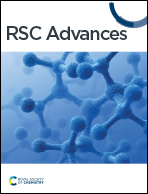Recent advances in g-C3N4-based photo-enzyme catalysts for degrading organic pollutants
Abstract
In recent years, photocatalytic reactions have shown great potential in degrading organic pollutants because of their simple operation and no secondary pollution. Graphitic carbon nitride (g-C3N4) is one of the most frequently used photocatalyst materials in the field of photocatalysis because it is a form of photocatalytic material with facile synthesis, no metal, visible light response, and strong stability. Enzyme-catalyzed degradation has received extensive attention due to its broad selectivity, high efficiency, and environmental friendliness. Horseradish peroxidase (HRP), one of several oxidoreductases utilized for pollutant degradation, has a wide range of applications due to its mild reaction conditions and high stability. Exploring efficient platforms for immobilizing g-C3N4 and HRP to develop photo-enzyme-coupled catalysis is an attractive practical topic. The coupling effect of g-C3N4 and HRP improves the carrier separation efficiency and generates more active species, which finally realize the solar-driven non-selective destruction of organic pollutants. We describe the alteration of g-C3N4 and the immobilization of HRP in detail in this study, and we outline recent developments in the photo-enzyme coupling of g-C3N4 and HRP.

- This article is part of the themed collection: 2023 Reviews in RSC Advances


 Please wait while we load your content...
Please wait while we load your content...